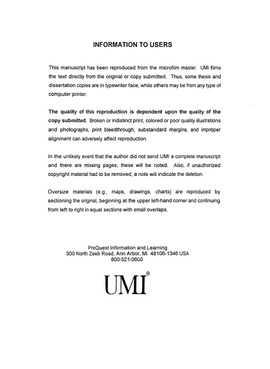| dc.contributor.advisor | Droegemeier, Kelvin K., | en_US |
| dc.contributor.author | Yoo, Hee-dong. | en_US |
| dc.date.accessioned | 2013-08-16T12:18:53Z | |
| dc.date.available | 2013-08-16T12:18:53Z | |
| dc.date.issued | 2003 | en_US |
| dc.identifier.uri | https://hdl.handle.net/11244/569 | |
| dc.description.abstract | One of the most effective tools for observing the atmosphere at fine scales is the Doppler radar. In recent years, considerable research has been directed toward using radar data as a component of numerical prediction model initialization, especially at the meso- and storm-scales. In Korea, where locally heavy rainfall events cause tremendous damage and loss of life each year, radar data could be expected to have a significant positive impact on numerical forecast quality. The first step toward testing this hypothesis has been undertaken in the present study, the purpose of which is to assess the impact of WSR-88D radar data assimilation in the numerical forecast of a deadly heavy rainfall event in Korea. | en_US |
| dc.description.abstract | A total of twenty six forecasts, two at 27-km, six at 9-km, and eighteen at 3-km resolution, were conducted. Quantitative verification is made against available observations, including accumulated rainfall estimates from the WSR-88D calibrated against surface gauge observations using software from Vieux and Associates, Inc. Our results suggest that radar data assimilation leads to significant improvements in forecast quality as measure by threat, equitable threat, and other quantitative and qualitative measures, though position errors in the maximum observed precipitation persist. It was clear that an experiment using three data inserts within a one-hour period, as compared to three inserts over a three hour period, produced the most skillful forecast. IAU is shown to be a viable mechanism for radar data assimilation, particularly in its ability to remove incorrectly-forecasted convection. We found that the positive impact of radar data for this particular event, using a grid spacing of 3 km, is approximately 3 to 4 hours process presented a limitation as forecast time increased. The structure and physical impact of the increments were examined for the rapid data assimilation case as well. The potential temperature, water substance, and vertical motion were incorporated well into the model forecast when employing radar data assimilation using IAU. This also led to a positive feedback mechanism in the convective system. | en_US |
| dc.description.abstract | We use the CAPS Advanced Regional Prediction System (ARPS), in combination with WSR-88D Level II data gathered by the US Air Force radar in Pyoungtaek, Korea, to generate a series of multi-resolution forecasts. One-way grid nesting is employed, with a horizontal resolution of 27-km for the coarse outer grid, 9-km for the middle grid, and 3-km for the inner fine grid. Incremental analysis updating (IAU) is employed to assimilate radar reflectivity and velocity data on the finest resolution grid, with variations made to the length of the assimilation window, the number of assimilation cycles, the time of model initialization, and various model parameters such as boundary condition update times. | en_US |
| dc.format.extent | xvii, 271 leaves : | en_US |
| dc.subject | Numerical weather forecasting Korea. | en_US |
| dc.subject | Weather forecasting Korea Chorwon. | en_US |
| dc.subject | Rain and rainfall Korea Chorwon. | en_US |
| dc.subject | Doppler radar. | en_US |
| dc.subject | Geophysics. | en_US |
| dc.subject | Physics, Atmospheric Science. | en_US |
| dc.title | The impact of radar data assimilation on the Chorwon-Yonchon 1996 heavy rainfall event. | en_US |
| dc.type | Thesis | en_US |
| dc.thesis.degree | Ph.D. | en_US |
| dc.thesis.degreeDiscipline | School of Meteorology | en_US |
| dc.note | Adviser: Kelvin K. Droegemeier. | en_US |
| dc.note | Source: Dissertation Abstracts International, Volume: 64-03, Section: B, page: 1292. | en_US |
| ou.identifier | (UMI)AAI3082926 | en_US |
| ou.group | College of Atmospheric & Geographic Sciences::School of Meteorology | |
